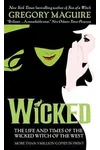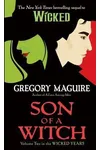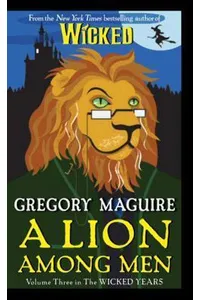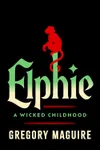Venture into the enchanting yet shadowy realm of the Wicked Years, where the Land of Oz is reimagined with a darker, more thought-provoking twist! Gregory Maguire’s spellbinding series flips L. Frank Baum’s classic tale on its head, transforming the Wicked Witch of the West into a complex heroine. With its blend of fantasy, political intrigue, and moral ambiguity, this series captivates readers eager for a fresh take on a beloved world.
Far from the sparkling Emerald City of the 1939 film, the Wicked Years offers a gritty, adult-oriented Oz where prejudice, power, and identity collide. Anchored by its iconic first novel, Wicked, the series has not only enthralled book lovers but also inspired a Tony-winning Broadway musical, making it a cultural juggernaut.
How the Wicked Years Began
In the early 1990s, Gregory Maguire, then a children’s author, found inspiration during the Gulf War. Struck by media comparisons of Saddam Hussein to Hitler, he began exploring the nature of evil. Instead of tackling historical figures, Maguire turned to a fictional villain: the Wicked Witch of the West. His childhood love for Baum’s The Wonderful Wizard of Oz and the 1939 film fueled his vision to craft a revisionist biography of the witch, whom he named Elphaba. Published in 1995, Wicked: The Life and Times of the Wicked Witch of the West became a word-of-mouth hit, laying the foundation for the series.
The Heart of the Wicked Years
The Wicked Years spans four novels, each delving deeper into Oz’s turbulent landscape. Wicked follows Elphaba Thropp, a green-skinned outcast who grapples with social ostracism and her burgeoning magical powers while fighting for animal rights in a corrupt Oz. Son of a Witch (2005) tracks Liir, Elphaba’s possible son, as he navigates his mother’s legacy amid political upheaval. A Lion Among Men (2008) shifts focus to Brrr, the Cowardly Lion, exploring themes of cowardice and redemption. Finally, Out of Oz (2011) concludes with Elphaba’s granddaughter, Rain, tying together the series’ sprawling narrative.
Maguire’s Oz is a richly imagined world where magic coexists with oppression. Themes of discrimination—especially against sentient Animals—and the fluidity of good and evil permeate the series. The prose, laced with humor and vivid imagery, balances political allegory with character-driven drama. Unlike Baum’s whimsical tales, the Wicked Years embraces a darker, more cynical tone, appealing to readers who crave depth in their fantasy.
Why the Wicked Years Resonates
The Wicked Years has left an indelible mark on modern fantasy, challenging readers to question stereotypes and moral absolutes. Its exploration of marginalized voices, particularly through Elphaba’s activism, resonates in today’s socially conscious climate. The Broadway musical Wicked, premiered in 2003, amplified the series’ reach, earning three Tony Awards and spawning a 2024 film adaptation starring Cynthia Erivo and Ariana Grande. This cultural phenomenon has introduced countless fans to Maguire’s nuanced storytelling, cementing the series as a must-read for fantasy enthusiasts.
The series’ ability to reframe a familiar story while tackling universal themes ensures its enduring appeal. Whether you’re drawn to its complex characters or its bold reimagining of Oz, the Wicked Years offers a journey that’s as thought-provoking as it is magical.
- Publication Years: 1995–2011
- Number of Books: 4
- Notable Adaptation: Tony-winning Broadway musical (2003)
Ready to explore a side of Oz you’ve never seen? Grab Wicked and dive into Gregory Maguire’s mesmerizing Wicked Years today!




